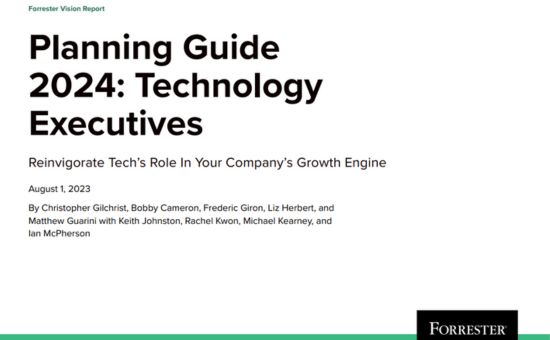Align Your Technology Architecture With Business Goals | Forrester
Growth Hacking
In today’s rapidly evolving business landscape, aligning technology serves as the linchpin for catalyzing customer growth, compelling leading enterprises to pivot their strategies toward customer-centric expansion.
As businesses increasingly prioritize customer-obsessed growth, it becomes imperative for technology architecture and delivery teams to adapt their approaches to align with these strategic imperatives.
This necessitates a deep understanding of the challenges faced by these teams in effectively synchronizing their operations with overarching business goals and objectives.
Enterprise Architecture’s Challenge:
Enterprise architecture (EA) encounters a significant challenge in its perceived disconnect from tangible business outcomes. Despite initial enthusiasm for formalized architectural practices, organizations often find themselves disillusioned with EA due to a perceived lack of demonstrable business value.
This sentiment is often exacerbated by a tendency among certain EA teams to prioritize theoretical architectural purity over-delivering tangible value to customers. Consequently, EA practices are sometimes criticized for being overly rigid, bureaucratic, and process-focused, rather than outcome-driven.
To address this challenge, Forrester recommends a fundamental shift in the value proposition of EA from a cost-centric technology analysis approach to one that is insights-driven and adaptive.
This entails a reorientation towards architectures that directly contribute to business outcomes, particularly those related to customer value delivery. High-performing EA teams are those that can clearly articulate the business value of their activities and translate EA capabilities into tangible services that facilitate digital transformation initiatives.
By prioritizing outcomes and experiences as the ultimate indicators of value, these teams align architecture with business goals, thereby driving organizational success.
Recommendation: An Outcome-Driven Architecture Model:
To operationalize this shift towards outcome-driven architecture, Forrester proposes the adoption of an Outcome-Driven Architecture Model. This model emphasizes the importance of aligning projects, products, and services with desired outcomes and experiences.
It advocates for the development of adaptive, creative, and resilient architectures that can effectively respond to evolving business needs. By prioritizing customer value delivery and establishing clear connections between architecture activities and business value, organizations can optimize their delivery processes and drive sustainable growth.

Application Development’s Challenge:
The challenge facing application development teams lies in the inadequacy of traditional development processes to adapt to evolving business needs. In today’s dynamic business environment, software development must be tightly aligned with business objectives, prioritizing value creation for customers.
However, conventional software development methodologies often exhibit inefficiencies such as handoffs, delays, and a lack of focus on value delivery.
To address these challenges, Forrester advocates for the optimization of development processes through the adoption of a Modern Application Delivery (MAD) Model. This model emphasizes the continuous, iterative delivery of business value through standardized processes and value-added activities throughout the development lifecycle.
By embracing practices that prioritize business value, such as value stream management, cloud-native development, low-code, and continuous testing, organizations can enhance their agility and responsiveness to changing market dynamics.
Infrastructure & Operations’ Challenge:
Infrastructure and operations (I&O) teams face the challenge of aligning network infrastructure with business objectives in an increasingly digital-centric landscape. Traditional network designs often prioritize IT connectivity over business differentiation, resulting in network infrastructures that are ill-equipped to support evolving business needs.
To overcome these challenges, Forrester recommends the adoption of Business-Optimized Networks (BONs). BONs are purpose-built networks designed to align with business goals and strategies, enhancing revenue generation, customer experiences, and employee productivity.
By integrating network technologies, architectures, and processes with business-centric principles, organizations can create agile, adaptive networks that serve as enablers of business success.
Forrester’s Support:
The Table of Contents of “Power Growth By Aligning Technology Functions With The Business ” Guide :
- Introduction
- Enterprise Architecture’s Challenge + Recommendation
- Application Development’s Challenge + Recommendation
- Infrastructure & Operations’ Challenge + Recommendation
- How Forrester Can Help
Number of Pages:
- 12 pages
Pricing:
- Free






